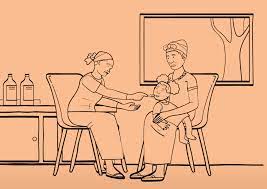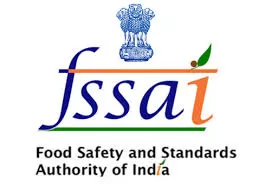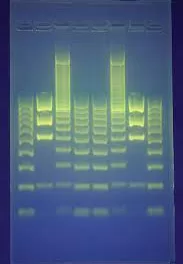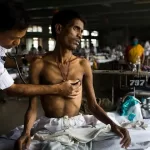| What is preventive chemotherapy?
Preventive chemotherapy is the use of medicines, either alone or in combination, to prevent malaria infection and its consequences. It requires giving a full treatment course of antimalarial medicine to vulnerable populations (generally infants, children under 5 years of age and pregnant women) at designated time points during the period of greatest malarial risk, regardless of whether the recipient is infected. Preventive chemotherapy includes intermittent preventive treatment of infants, school children and pregnant women, seasonal malaria chemoprevention, post-discharge malaria chemoprevention and mass drug administration. |
Updated recommendation: seasonal malaria chemoprevention (SMC)
In some areas, malaria is highly seasonal, with most cases occurring over a short period during the rainy season. SMC is designed to protect children by clearing existing infections and preventing malaria infections during the season of greatest risk. This is achieved through the monthly administration of antimalarial medicines, usually sulfadoxine-pyrimethamine plus amodiaquine (SP+AQ), for as long as the rainy season lasts.
In 2021, 13 countries in the Sahel subregion of Africa implemented SMC, and public health experts believe that many other countries could benefit from the intervention, too.
The updated WHO recommendation on SMC differs from the original 2012 recommendation in at least 2 significant ways:
No more geographic restrictions
The original recommendation restricted SMC use to the Sahel subregion of Africa; SMC could not be recommended, at the time, in areas outside the Sahel with highly seasonal malaria transmission, such as in southern Africa, due to high levels of resistance to the medicines (SP and AQ) in those areas. The updated recommendation recognizes that countries in other parts of Africa with highly seasonal variation in malaria burden could also benefit from SMC, and that the availability of new medicines could make it a viable intervention in these areas.
The original recommendation stated that a maximum of 4 monthly doses of SMC should be given during the malaria transmission season. The updated guidance states that SMC should be given during peak malaria transmission season, without defining the specific number of monthly cycles.
More flexibility in recognizing age-based risk among children
While the original recommendation restricted SMC use to children less than 6 years of age, the new recommendation recommends this intervention for children at high risk of severe malaria, which may extend to older children in some locations.
“The flexibility of the new guidelines is key,” said Dr Dorothy Achu, National Malaria Control Programme Manager for the Ministry of Health in Cameroon. “It will enable countries like Cameroon to tailor their strategies. This will enhance the impact of SMC, especially when used with other interventions such as bed nets and the new malaria vaccine.”
Updated recommendation: perennial malaria chemoprevention (PMC)
In some countries, malaria is a year-round disease, and transmission is high. WHO has recommended the use of intermittent preventive treatment in infants (IPTi) – now called perennial malaria chemoprevention (PMC) – in these countries since 2010. But until recently, only one country, Sierra Leone, had adopted this strategy. Additional experience and evidence over the last decade have informed the updated guidance.
The updated recommendation differs from the original 2010 recommendation in at least 2 important ways:
Dosing ages and intervals
The original recommendation stated that three doses of the drug SP should be given only at 2, 3 and 9 months of age through the expanded programme on immunization (EPI), timed with the 2nd and 3rd doses of the DPT/Penta and measles vaccines.
The new recommendation removes this tight specification for the number of doses, as well as the ages at which they should be given. It also extends the target age group to include children beyond the first year of life in places where the burden of severe disease is high.
Consideration of drug resistance
The original guidance suggested that SP should only be used for chemoprevention if parasite resistance, measured using molecular markers, was below a certain threshold. However, the accumulated evidence shows that SP continues to be effective chemotherapy for malaria even when the prevalence of molecular markers of SP resistance is high and this medicine is no longer an effective treatment. As a result, the new recommendation has removed restrictions on the use of SP based on the prevalence of Pfdhps 540 mutations.
To support decision making at the country level, each WHO chemoprevention recommendation is accompanied by a summary of available research evidence, an explanation of how this was used to inform the recommendation and practical information on key considerations for implementation. WHO will continue to develop or revise implementation guidance documents to support national malaria programmes in the adoption, adaptation and implementation of the updated recommendations.
Updated recommendation: intermittent preventive treatment in pregnancy (IPTp)
Malaria infection during pregnancy poses substantial risks not only to the mother, but also to her fetus and the newborn. Available evidence continues to show that intermittent preventive treatment in pregnancy (IPTp) with SP is a safe and highly cost-effective strategy for reducing the disease burden in pregnancy as well as adverse pregnancy and birth outcomes.
The updated recommendation on IPTp differs from the original 2012 recommendation in at least 2 important ways:
Delivery method
The updated recommendation does not limit the delivery of IPT-SP to antenatal care (ANC) contacts; where inequities in access to ANC services exist, other delivery methods, such as the use of community health workers, may be explored.
Pregnancy
In malaria-endemic areas, IPTp is now recommended for all pregnant women, regardless of the number of pregnancies. Previously, it was recommended only during a woman’s first and second pregnancies.











